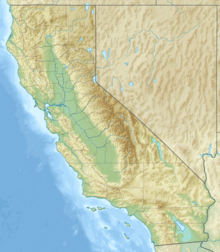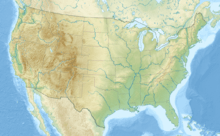Daff Dome facts for kids
Quick facts for kids Daff Dome |
|
|---|---|

Daff Dome viewed from Fairview Dome
|
|
| Highest point | |
| Elevation | 9,158 ft (2,791 m) NAVD 88 |
| Prominence | 514 ft (157 m) |
| Geography | |
| Location | Yosemite National Park Tuolumne County, California, U.S. |
| Parent range | Sierra Nevada |
| Topo map | USGS Tenaya Lake |
| Climbing | |
| First ascent | West Crack by Frank Sacherer in June 1963 |
| Easiest route | East side, class 3-4 scramble |
Daff Dome is a huge, rounded granite rock in Yosemite National Park. It stands about 800 feet (244 meters) tall! You can find it about 3 miles (4.8 km) west of Tuolumne Meadows, not far from Tioga Road. It's close to other domes like Doda Dome and the Cottage Domes.
The name "DAFF Dome" is actually a cool acronym. It stands for "Dome Across From Fairview Dome." People started calling it that in the 1960s because it never got an official name.
Climbing Daff Dome
Daff Dome is very popular with rock climbers. It has many exciting routes, including "slab" and "crack" climbs. Slab climbing means climbing on smooth, steep rock faces. Crack climbing involves using cracks in the rock to hold onto.
Famous Climbing Routes
Two of the oldest and most famous climbing routes on Daff Dome are West Crack and Crescent Arch.
West Crack
West Crack was first climbed by Frank Sacherer in June 1963. This route is about 400 feet long and follows a continuous crack in the rock. It's a "multi-pitch" climb, which means climbers stop at different points (called pitches) to rest and set up for the next section.
Crescent Arch
Crescent Arch was first climbed in June 1965 by Layton Kor and Fred Beckey. Later, Bob Kamps and TM Herbert were the first to "free climb" it. Free climbing means using only your hands and feet to move up, with ropes just for safety. This route is also a multi-pitch climb. It goes up a corner and crack system in a large "open book" shape on the rock.
Images for kids





